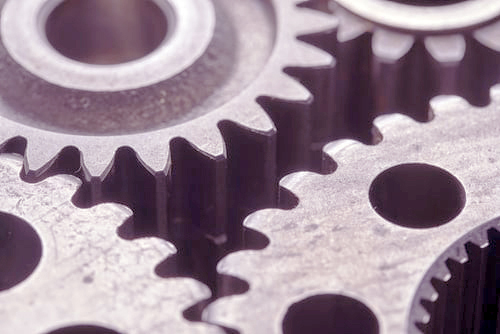
Demisters for droplet separation
Demisters separate up to 100% of 2-5µm droplets in a gas flow.
Our range of demisters consists of the traditional wire demister that is made by multiple layers of mesh fabric knitted from metal or plastic monofilaments, crimped and then assembled so that the crimps cross in successive layers forming a pad. A wire demister removes droplets larger than 5 µm. For separation of droplets in the range of 2-5µm a coalescer, is used. The coalescer has a similar construction to the wire demister, but consists of smaller fibres as well.
In addition to these two types of demisters, we also offer the innovative structured demister Bluefil which can be used in a variety of applications.


Demisters
A wire demister separates up to 100% of droplets >5µm in a gas flow. Relatively low pressure drop.

Coalescer
A coalescer, in combination with a demister, achieves a separation efficiency of up to 99.5% in the droplet range 2-5µm.

BlueFil®
BlueFil® is an innovative, structured demister. High separation efficiency with low pressure drop.
How droplet separation works using demisters, coalescers & candle filters
Demisters, coalescers and candle filters are made from a large number of wires or fibres that the gas stream is forced to pass through. The liquid droplets collide with or get stuck between the wires/fibres and merge. The merged droplets grow in size and are eventually affected by gravity enough to flow to the bottom of the demister/coalescer/candle filter, where the liquid is diverted from the gas flow.

Impaction (Droplet size >3µm)
The liquid droplets in the gas flow collide with the surface of a wire or fibre in a demister and get trapped instead of being carried away with the gas flow. Impaction occurs at gas velocities between 1 and 10 m/s.
Inception (Droplet size 1-3µm)
The droplets are trapped between the threads or fibres at gas velocities usually between 0.2 and 0.8 m/s. Typically, the finer the fibres, means less space between the fibres, which in turn increases the amount of droplets captured.
Brownian diffusion (Droplet size <3µm)
Brownian diffusion occurs at low gas velocities, normally below 0.2 m/s and maximum up to 0.25 m/s, when the gas passes through a bed of very fine fibres. The small liquid droplets collide with the surrounding gas molecules, forcing the liquid droplets to move in different directions and eventually collide with the fibres in the bed. The smaller the diameter of the fibre, the smaller the liquid droplets that can be captured from the gas flow.
Choose the right product for optimised droplet separation
To achieve the most effective droplet separation, it is important to understand how different parameters affect the choice of product and type of solution.
- How does droplet size affect choice of droplet separator?Read the full answer
A process gas contains a wide range of droplet sizes distributed in line with a normal (Gaussian) distribution graf. Different types of droplet separators capture and remove different droplet-size ranges.
- Why is pressure drop an important factor when selecting and designing a droplet separator?Read the full answer
A process gas flow is generated by a fan or compressor, which creates a vacuum or outlet pressure. Pressure is energy, which is a cost and needs to be taken into account in order to find an optimal solution.
- Are there any specific requirements regarding separation/removal efficiency?Read the full answer
Separation or removal efficiency targets may be set by statutory emission requirements or a need to reduce a certain amount of contaminants in order to avoid corrosion and other damage downstream in the process. In some processes, droplet separators are used to reuse valuable substances and product.
- Which other parameters affect the selection and design of a droplet separator?Read the full answer
In addition to droplet size, allowable pressure drop and desired separation efficiency, there are a number of other important factors to consider when selecting and optimising the design of a droplet separator.
- Why is effective droplet separation a win-win for your business and the environment?Read the full answer
Efficient and optimally designed droplet separation removes contaminants and other unwanted substances in the process prevents damage and corrosion to pipes, compressors and other process equipment enables product recycling ...which leads to increased process efficiency, energy and cost savings, and reduced hazardous emissions.

Effective droplet separation - a win-win for your business and the environment
Efficient and optimally designed droplet separation removes contaminants and other unwanted substances in the process
- removes contaminants and other unwanted substances in the process
- prevents damage and corrosion to pipes, compressors and other process equipment
- enables product recycling
...which leads to increased process efficiency, energy and cost savings, and reduced hazardous emissions.

Previous projects
Read more about a selection of customised solutions and projects we have carried out for our industry colleagues and partners.
Right solution, delivered on time
Delivering the right solution on time requires co-operation, structure, attention to detail and following a process throughout the project.

FAQ Droplet separation
Here you will find a variety of questions and answers on droplet separation.



